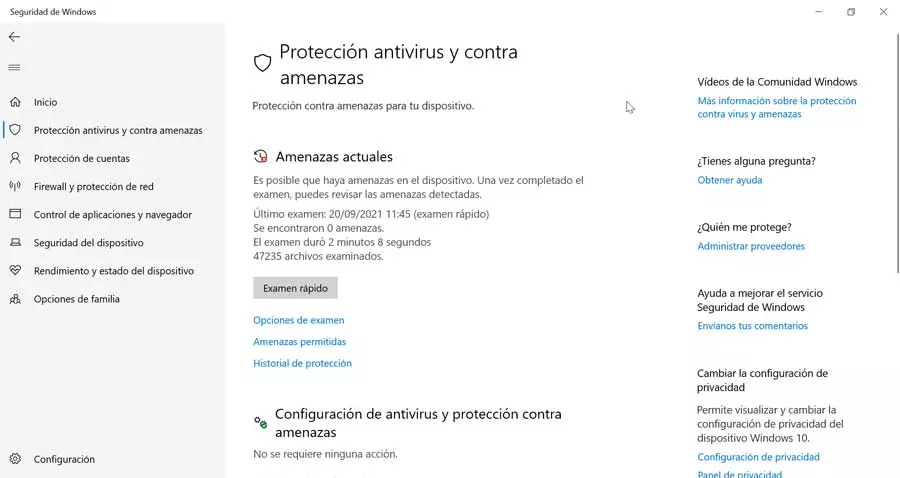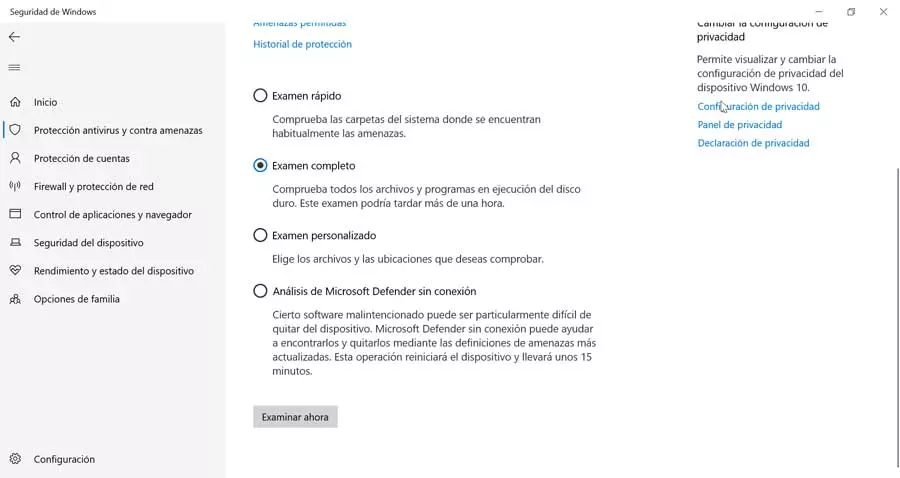
Microsoft’s antivirus has active and real-time protection, so it is alert to possible threats. Likewise, it is also possible to configure antivirus scans, for which it has a quick mode, a complete one and an offline mode, for those viruses that attack and infect the system’s boot record.
Quick exam, the one recommended by Microsoft
Windows Defender Quick Scan is characterized by, as its name suggests, quickly browse all locations where a malware could have been registered to start working on the system. These key sites are primarily the Windows registry and startup folders.
This type of analysis is what Microsoft offers as recommended. This exam checks the processes, memory, profiles, and finished locations of the device. Combined with the always-on and real-time protection, it checks all kinds of files every time they are opened and closed, just like when we open a folder. It is a quick add-on that helps provide secure protection against malware system and kernel level.
It is likely that, in most cases, a quick scan will suffice to ensure that our system is free of threats and it also becomes a good option to configure as a scheduled scan. That is why it is ideal for use it regularlyl.
Comprehensive examination, to examine in detail
When we talk about a full exam, we are talking about a type of analysis that starts from the execution of a quick exam but continues with a sequential scan of all files on all disks and drives, both internal and external. Depending on how much data there is to examine, these types of exams can take hours or even days to finish.
A full scan has the ability to detect malicious files that could not be detected by quick scans. However, consider how long it can take a full scan to complete your work, wasting energy and using valuable system resources.
Since a quick scan coupled with active real-time protection should be sufficient to keep you safe from any malware, it is not recommended to perform full scans on a frequent basis or to schedule them in advance. Its use must be based on our being very sure that a malicious file is negatively affecting our system and we have enough time to carry out the task.
Offline scan, scans for hidden viruses at startup
The offline scan is an effective tool that is responsible for detecting viruses offline, since the analysis is carried out from a trusted environment and without having started the operating system. This scan is done from outside the Windows kernel, in order to find malware that tries to bypass the Windows Shell, something that occurs with viruses that infect the master boot record (MBR).
This type of examination can be useful if we suspect that our PC is infected by a hidden virus, but on the other hand, neither the quick or full examination modes fail to detect anything. If necessary, we can choose to start the Windows Defender Offline exam from the Windows Security settings. Once Windows is executed it restarts to start in a special recovery mode from which it updates the virus database, it will scan our system and detect and eliminate hidden malware.




